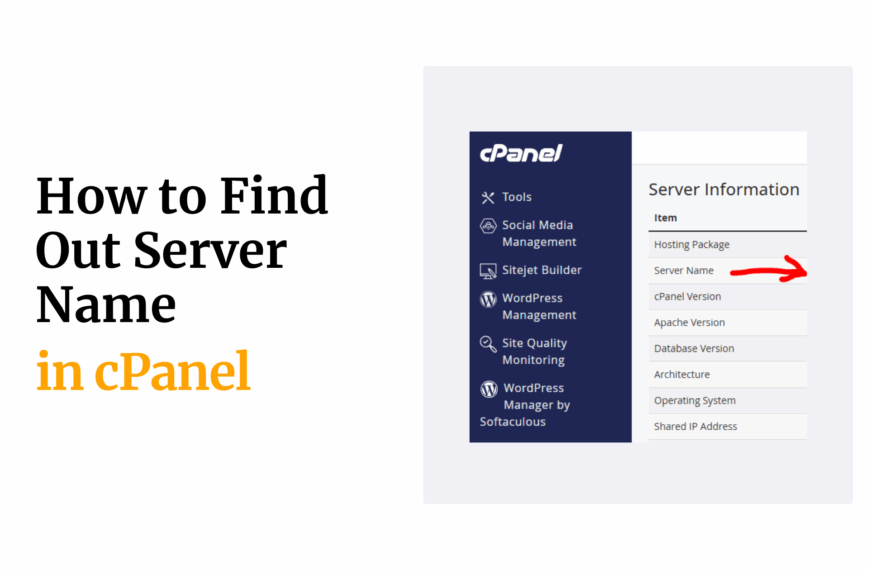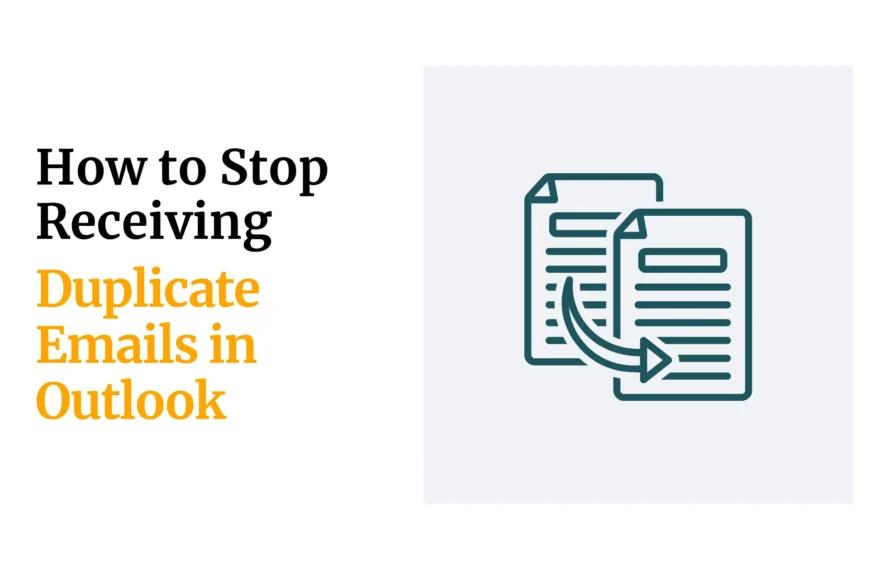Are you still trying to figure out which to choose, POP vs IMAP for your email configuration?
But what even will get you to this point?
Let’s consider this scenario: you are a small business owner from Johannesburg receiving client emails on your cellphone during meetings only to find that your laptop contains an entirely different inbox.
Or a freelancer located in Cape Town, praying that your emails wouldn’t disappear during offline periods.
Does that ring a bell?
Fortunately or unfortunately, you are not the only one.

The choice between POP and IMAP can often be overwhelming and immensely affect your workflow.
It is understandable, though.
I mean, email needs to be dependable, secure, and compatible with your hosting.
It is for this reason that we explain the POP vs IMAP clash, to ease your work.
We’ll cover everything from how they work, their key differences, pros, cons, how they integrate with other email tools, and security tips to keep your data safe under South African regulations.
Let’s make your email setup stress-free!
Table of Contents
What is POP? (Post Office Protocol)
Originally created over 40 years ago, POP3 (it’s a more recent version) is like an old reliable truck; it just does its job.

POP3 grabs your email and stores it on your device.
It does not just keep a copy in the server. POP3 erases the server’s copy by default.
Therefore, the emails stored can only be accessed offline through your phone or laptop.
How POP Works
When you set up POP on an email client like Outlook, it connects to your Truehost email server (like those offered under Truehost’s email hosting plans).
It pulls all your emails to your device, freeing up server space.
Think of it like collecting all your post from the post office and taking it home—you’ve got everything locally, but the post office doesn’t keep copies unless you ask.
Key Features
Offline access: Perfect for South Africans in areas like rural Limpopo, where internet isn’t always reliable.
Local storage: It saves you server space, which is great if you’re opting for Truehost’s basic email plans.
Simplicity: It is also straightforward if you stick to one device.
When Should I Use POP?
If you have a single device you want to use, for example, a laptop, from which you access email, then POP is the best approach.
You gain simplicity, especially if you work offline during power outages and use offline email access to stay updated during low power usage times.
Plus, users on Truehost’s budget plans get the additional benefit of lesser server storage needs.
What is IMAP? (Internet Message Access Protocol)
Now, picture a Cape Town startup like Takealot, with a team syncing emails across phones, tablets, and desktops.
IMAP, which stands for Internet Message Access Protocol, streamlines this. IMAP came into being in the late 1980s, and it is a connected SUV of a protocol; it provides flexibility.
This one, rather than downloading your emails and storing them locally, it instead keeps them on a pop server, syncing them across all your devices in real time.
So, it’s easy for your team to pull resources.
How IMAP Works
Your Truehost server operates all phone and email-related functions simultaneously.
If you have your accounts set up for IMAP, any action regarding emails is instantaneous.
For instance, if you read, delete, or move an email on your phone, those actions replicate on your laptop within seconds.
Since your emails are stored on the server, you’re always accessing the most updated version, irrespective of the device used.
IMAP provides the functionality of a smart mailbox that duplicates your most recent mail in every location you visit.
Key Features
Multi-device sync: Ideal for remote teams located in Durban or people who are always on the move.
Server storage: Even if devices malfunction or crash, emails are stored server-side and remain retrievable.
Folder management: You can sort or categorize emails into folders that sync across devices.
What is IMAP Used For?
IMAP is designed for mobility and collaboration.
For example, we could take Trevor Noah’s production crew managing international emails while shooting in Johannesburg.
They could actually rely on IMAP to sync devices for scripts and schedules.
It’s a simple win-win!
IMAP is also great for users at Truehost who get cloud storage, especially for businesses with multiple employees, as they offer hassle-free access.

Does IMAP Work with Gmail?
Now, this is a very valid question. The answer is a big Yes!
Yes, Gmail supports IMAP, making it a go-to for South Africans integrating their Truehost domain email (e.g., [email protected]) with Gmail’s interface.
You Just need to do something as simple as setting it up in Gmail’s settings under “Accounts and Import” for smooth syncing.
Key Differences Between POP and IMAP
So, how do you know if you need POP3 or IMAP?
Let’s break it down.
The POP vs IMAP debate hinges on how you use email, your internet reliability, and your Truehost plan.
Here’s a comparison to make it crystal clear:
| Aspect | POP | IMAP |
| Storage | Downloads to local device | Stays on server |
| Synchronization | One-way (device only) | Two-way (all devices sync) |
| Bandwidth Usage | High initial download, then low | Ongoing sync, higher data use |
| Security | Risk if device is lost | Server-based, needs secure hosting |
| Best for | Single-device, offline use | Multi-device, collaborative teams |
Storage and Access
POP pulls emails to your device, which is great for offline work but risky if your laptop dies (or think of that one bad day when someone decides to steal your only device).
IMAP keeps emails on the server, so you can access them anywhere, perfect for businesses using Truehost’s secure servers. Also comes in handy when you lose your device.
Synchronization
In the POP vs IMAP comparison, sync is a worthy point.
For the case of POP, it doesn’t update other devices, meaning if you read an email on your phone, your laptop won’t know.
On the other hand, IMAP syncs everything, so that a Johannesburg marketing team can work seamlessly across devices.
Bandwidth
POP is more efficient and cost-effective for users in rural South Africa.
Users in these regions will benefit from the single-download email skim.
South Africa’s mobile data prices make IMAP’s constant syncing problematic.
Security
Which is more secure, IMAP or POP3?
Both make it possible to use SSL/TLS encryption, but POP is burdened with the hack of POP3’s data-at-rest vulnerability.
IMAP relies on server security, and with Truehost’s secure hosting, it’s safer for businesses bound by POPIA regulations.
How Do I Know If I Need POP3 or IMAP?
Choose POP if you’re a solo user with one device and limited internet, like a farmer in the Free State.
Pick IMAP if you’re a team or mobile user needing sync, like a Sandton agency managing client campaigns.
Pros and Cons of POP vs IMAP
Now for the part you’ve been waiting patiently for: is it better to use IMAP or POP?
Well, it depends on your setup.
Let’s weigh both to help you decide.
POP Pros
You can work without internet, which is crucial during SA’s load shedding.
Saves server space, which is great for Truehost’s budget email plans.
Easy for non-techies to set up.
POP Cons
Changes on one device don’t reflect elsewhere.
If your device crashes, emails may be gone.
Not ideal for teams.
IMAP Pros
Perfect for businesses like Takealot managing orders across devices.
Emails are safe even if your phone is lost.
Manage emails efficiently, synced everywhere.
IMAP Cons
It needs reliable internet, a challenge in SA’s rural areas.
It also uses more server storage, which may increase costs.
Constant syncing eats data, bringing a concern with high mobile costs.
When to Choose POP vs IMAP: Practical Advice for South African Users
Should you use POP or IMAP settings?
This boils down to your needs:
Choose POP: If you’re a solo user checking emails on one PC, POP’s offline access and simplicity are perfect. Set it up in Truehost’s cPanel under “Email Accounts” and select POP3 in your client (e.g., Outlook).

Choose IMAP: If you’re a remote team in Cape Town, like a startup using Truehost’s business email, IMAP’s syncing keeps everyone on the same page.
Can you use IMAP and POP at the same time?
Technically, yes, but it’s tricky.
For example, if you use POP on your laptop and IMAP on your phone, actions like deleting emails on one may not sync to the other, causing confusion.
Stick to one protocol for consistency, or consult Truehost’s support team to configure it correctly.
SA-Specific Tips
Data costs: POP saves data after downloads; IMAP’s syncing can rack up costs on mobile networks like MTN or Vodacom.
Connectivity: POP suits spotty connections in rural areas; IMAP needs stable internet, common in urban hubs like Pretoria.
Truehost integration: Use Truehost’s cPanel to set up either protocol, and check their support page for tutorials.
Using POP and IMAP with Gmail
Is Gmail IMAP or POP?
Gmail supports both, giving Truehost users flexibility to link their domain email (e.g., [email protected]) to Gmail.
Here’s how it works:
1) Does IMAP work with Gmail? Yes, enable IMAP in Gmail’s settings (“Settings > See all settings > Forwarding and POP/IMAP”). It’s ideal for syncing your Truehost email across devices.
2) Can I enable both POP and IMAP in Gmail? Yes, Gmail allows both, but use one for your Truehost email to avoid sync issues. For example, a Johannesburg entrepreneur might use IMAP for mobility but enable POP for a backup laptop.
3) Can I convert a POP account to IMAP? It’s not a direct conversion—you’d need to reconfigure your email client to IMAP and re-sync emails. This can be complex, so contact Truehost’s support or use Gmail’s “Add another email account” feature to set up IMAP afresh.
Security Considerations in POP vs IMAP
Which is more secure, IMAP or POP3?
Both can be secure with SSL/TLS encryption, but risks differ.
POP stores emails locally, so a stolen device could expose data—bad news for POPIA compliance.
IMAP keeps emails on Truehost’s secure servers, reducing risk if you lose your phone, but server hacks are a concern.
Best Practices
1) Enable SSL in your email client (check Truehost’s guides).
2) Use strong passwords and two-factor authentication.
3) Back up emails regularly, especially with POP, to avoid data loss.
4) For POPIA compliance, ensure your Truehost plan uses local servers to keep data in South Africa.
FAQ
Is it better to use IMAP or POP?
It depends. POP suits single-device users with limited internet; IMAP is better for multi-device syncing. For example, a rural SA farmer might pick POP, while a Cape Town agency prefers IMAP.
Should I use POP or IMAP settings?
Use POP for offline access on one device, like a laptop. Choose IMAP for syncing across phones and computers, ideal for Truehost business users.
When should I use POP?
Use POP if you work offline often, use one device, or want to save server space on Truehost’s budget plans.
How do I know if I need POP3 or IMAP?
Assess your needs: one device and offline work = POP; multiple devices and collaboration = IMAP.
Is Gmail IMAP or POP?
Gmail supports both. You can configure your Truehost email with either in Gmail’s settings.
What are the disadvantages of IMAP?
IMAP requires stable internet, uses more data, and may increase server storage costs on Truehost plans.
Can I use IMAP and POP at the same time?
Yes, but it can cause sync issues. Stick to one for simplicity, or ask Truehost support for guidance.
What is IMAP used for?
IMAP syncs emails across devices, perfect for teams or mobile users like a Johannesburg marketer.
Which is more secure, IMAP or POP3?
Both support SSL/TLS, but IMAP’s server storage is safer if your device is lost, especially with Truehost’s local servers for POPIA compliance.
Does IMAP work with Gmail?
Yes, enable it in Gmail’s settings for seamless syncing with your Truehost email.
Can I enable both POP and IMAP in Gmail?
Yes, but use one protocol for your Truehost email to avoid confusion.
Can I convert a POP account to IMAP?
You can’t directly convert, but you can reconfigure your client to IMAP and re-sync emails. Truehost support can assist.
How do I set up POP or IMAP with Truehost in South Africa?
Use Truehost’s cPanel to configure your email account, selecting POP3 or IMAP based on your needs. Check Truehost’s email setup guide for step-by-step help.
Conclusion
In the POP vs IMAP debate, there’s no one-size-fits-all.
POP is your go-to for single-device, offline use, perfect for South Africans battling connectivity issues.
IMAP shines for teams and mobile users needing seamless sync, like a Pretoria startup on Truehost’s cloud email.
If you understand your needs—device usage, internet reliability, and Truehost plan—you can choose the right protocol.
Got questions? Truehost’s support team can help you set up POP or IMAP in minutes.
 Web Hosting
Web Hosting Windows HostingBuilt for Windows apps and websites – stability, speed and flexibility
Windows HostingBuilt for Windows apps and websites – stability, speed and flexibility Reseller HostingLaunch a hosting business without technical skills or expensive infrastructure
Reseller HostingLaunch a hosting business without technical skills or expensive infrastructure Affiliate ProgramRefer customers and earn commissions from sales across our platform
Affiliate ProgramRefer customers and earn commissions from sales across our platform Domain SearchFind and secure a domain name in seconds with our quick lookup tool
Domain SearchFind and secure a domain name in seconds with our quick lookup tool CO ZA Domains
CO ZA Domains All DomainsExplore domain names from over 324 TLDs globally – all in one place
All DomainsExplore domain names from over 324 TLDs globally – all in one place Free Whois Lookup Tool South Africa
Free Whois Lookup Tool South Africa VPS
VPS SSLs
SSLs







